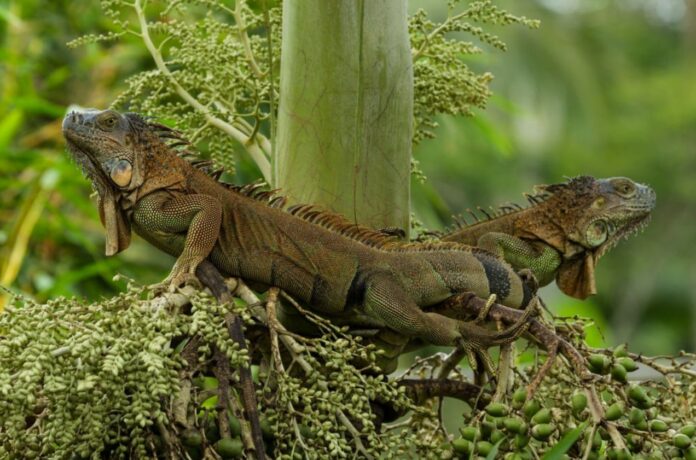A study by a University of Texas at Austin paleobiologist shows the devastating impact of even a small number of reptile species going extinct in some island regions.
The Proceedings of the National Academy of Sciences published the study, which highlights the alarming consequences of human activity on smaller Caribbean islands. The loss of native reptile species has resulted in up to two-thirds of the ecosystem support being gone in areas where the human impact was greatest.
This study, which is the first of its kind to examine the role of reptiles in island ecosystems, stands out from previous research that focused on large mammals or other animals. It explores functional diversity, delving deeper than just recording the presence of different species over time. The study analyzed 418 Caribbean reptile species.
The paper outlines the roles played by various species in maintaining a healthy natural ecosystem.
The 418 species may be divided into 123 functional entities, which are groups of species that have similar features and may provide comparable ecological functions.
“Functional diversity is a really important measure of the health of an ecosystem,” adds Melissa Kemp. “It’s important to understand the number of species in a given system, but it’s equally, if not more, important to understand the roles those species play. That’s the measure of functional diversity.”
For instance, the hunting of giant tortoises to extinction in the Caribbean region not only resulted in the loss of the tortoises themselves but also a critical service they provided. Giant tortoises play a crucial role in dispersing plant seeds.
That role was lost in the Caribbean, and the problem was exacerbated by the loss of other large-bodied herbivores like sloths, resulting in particular plants having limited dispersion agents and ranges.
Human-introduced species also contribute to variations in functional diversity through time, with sometimes contradictory outcomes. The mongoose is unquestionably one of the study’s invasive species villains. The small animal, which looks like a weasel and eats reptiles, was brought to the islands by European settlers.
“In the historical record, you can see when Europeans arrived and the mongoose was introduced, reptile species disappeared on these islands,” Kemp adds.
But when green iguanas were brought to islands that had lost reptile-related functional diversity, the reverse happened. The spaces were filled by the green iguana. In several situations, the species even assisted in bringing functional diversity back to ancient levels.
Although the green iguana has certain functional similarities with some local iguanas, Kemp said there are concerns about how it will interact with native iguanas and how it may affect functional diversity in the long run. In certain areas, invading green iguanas are mating with native ones.
Kemp discovered that smaller islands, in particular, don’t have the buffer that larger islands do when they lose a set of reptile species that help keep an ecosystem stable, like when a mongoose is introduced.
For example, Cuba, Jamaica, Hispaniola, and Puerto Rico, which are the four largest islands, still have between 80% and 98% of their original functions.
The study discovered that smaller islands with less human impact still maintained a significant portion of their functional diversity. For example, Mona and Sombrero, two extinct islands, still have 75% of their original functional entities despite having only been used for small-scale mining following European colonization.
The Caribbean islands are among the planet’s most biodiverse regions, with sensitive ecosystems and a plethora of species that are unique only to certain islands.
The subject is crucial for conservation since more ecosystems are vulnerable to collapse without functional diversity that includes a variety of reptiles.
“It’s becoming readily apparent that we’re not going to be able to save every single species. Some are already extinct or functionally extinct in the wild,” warns Kemp. “Trying to conserve the functions that organisms provide to an ecosystem might be a bigger focus moving forward.”
The National Science Foundation provided funding for the study.
Source: 10.1073/pnas.2201944119
Image Credit: Jon G. Fuller/VW Pics/Universal Images Group via Getty Images
